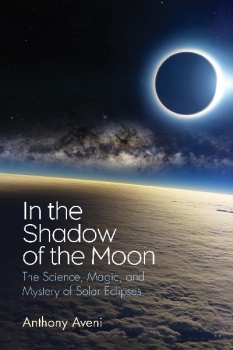Viewing a total eclipse of the sun is almost a rite of passage among astronomers (and others too), and no amount of vicarious narrative and TV viewing can substitute for actually being there. This book comes at an opportune time for me, given that I lost my own total eclipse ‘virginity’ as recently as August 2017 on a bridge across the Snake River in Idaho.
The author is an astrophysicist and anthropologist, the “fortunate witness” of eight total solar eclipses which have taken him from the South Pacific to the Egypt-Libya border. Having been trained as a scientist, he admits he didn’t “think much about how different cultures might interpret the cosmos” until he took a group of students to measure the celestial orientation of pyramids in Mexico. He and archaeologists there “created a new interdisciplinary field variously called astroarchaeology, archeoastronomy, and cultural astronomy”- and this is the main subject of his book.
Observing that most explanations of how people around the world understand natural phenomena are “a bit short-sighted”, the author says his book represents an attempt to “broaden our collective vision”. His personal narrative is presented in four main sections (introduction, eclipses in the ancient and modern worlds, lessons, and personal eclipses). The volume concludes with chapter notes and an index, and there is a brief chronology of solar eclipses, which includes future eclipses up to September 2099 (for those who expect to be around).
Of course, there is science in this book but it is cleverly interweaved with history, culture and the social aspects of eclipses, which makes it both accessible and fascinating to those already familiar with the science of astronomical alignments. It includes quotes from the Bible, excerpts from poems and references to ‘rave’ culture. And there is also humour: noting the narrowness of the band of totality and the limited chances of ever seeing a total eclipse, the author writes “you could opt to stay put and see a partial eclipse, but that’s a bit like being in the stadium the day before the Super Bowl”.
I couldn’t agree more: it was surprising how light it was even one minute before totality with just a sliver of the sun still visible. For me, the most surprising effect was the distinct sense of foreboding that accompanied the final seconds before totality and I suddenly understood how the ancients – less schooled in astrophysics than today’s observers – might have felt as the sun was devoured by a black disk. This book will help eclipse virgins and the more experienced alike to appreciate the social context and impact of the total solar eclipse.
Mark Williamson











